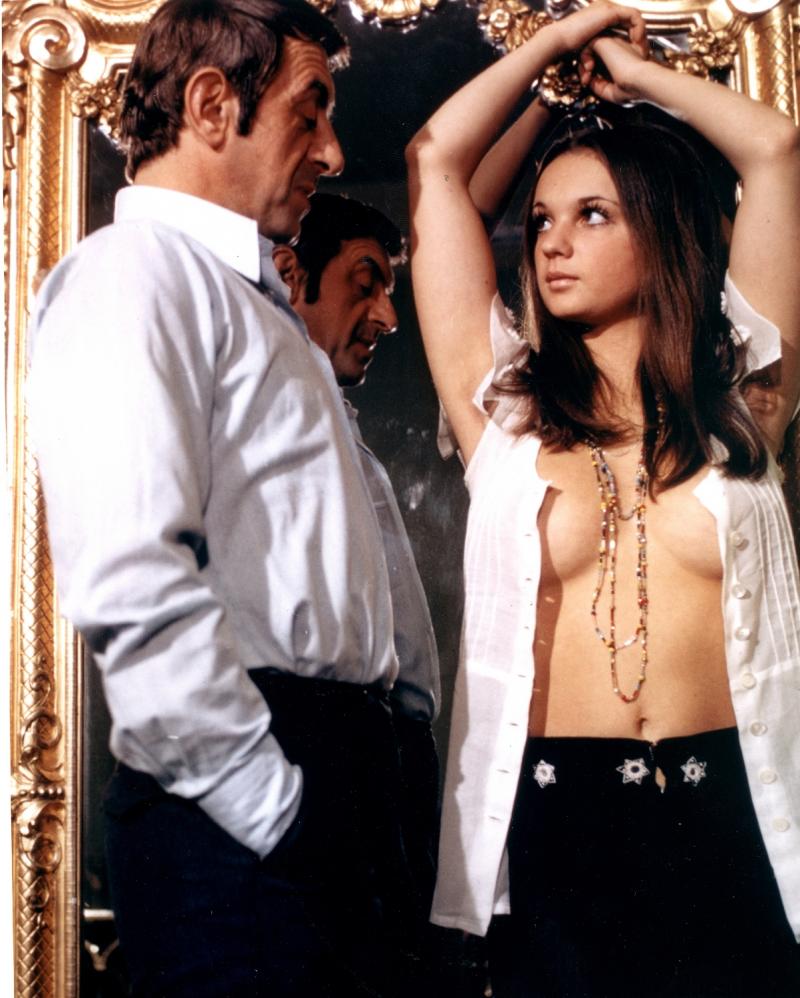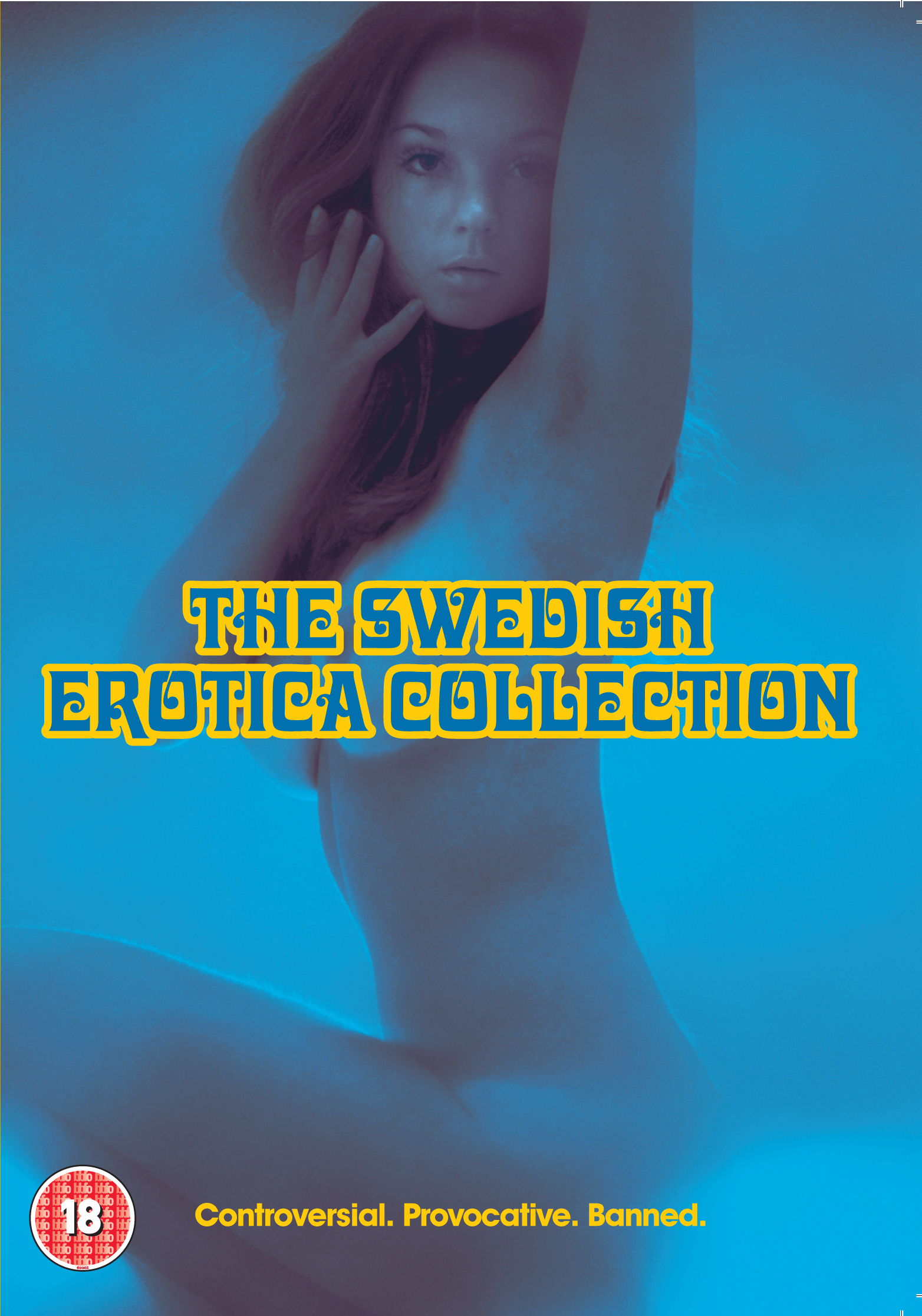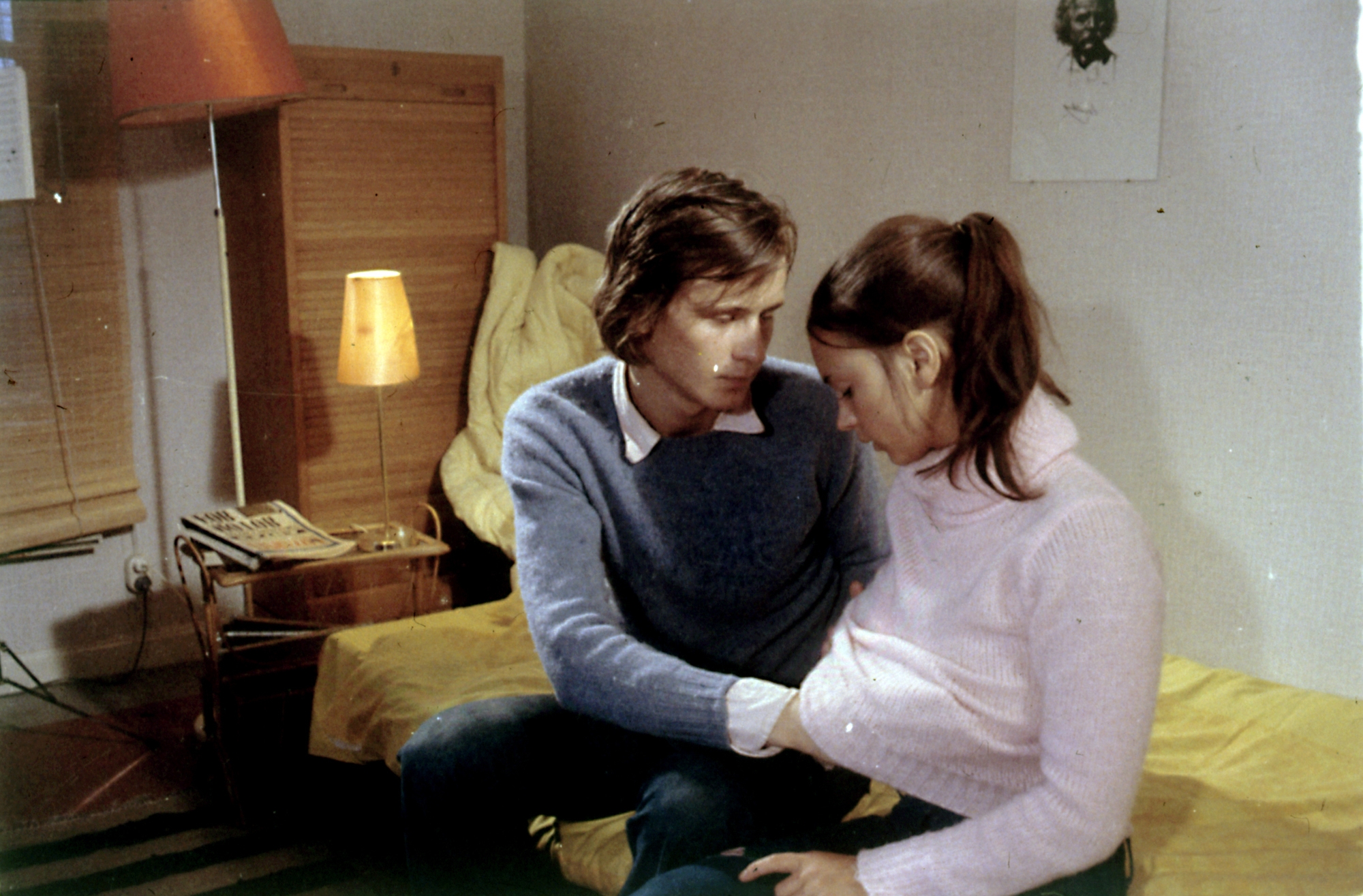The Swedish Erotica Collection: Alienation, Education and Morality | reviews, news & interviews
The Swedish Erotica Collection: Alienation, Education and Morality
The Swedish Erotica Collection: Alienation, Education and Morality
Notorious late 60s and early 70s sex films revealed to be less than erotic

Although the title of this new DVD box set was a given considering the nature of the films included, all six films collected are – whatever their reputation, levels of nudity and explicitness – sober-minded, hardly measuring up to any standard of what normally constitutes erotica. Three are dry sex education films, presented by real-life psychologists, while the other three are bizarre examinations of an alienated young women in relationships that involve power play, subjugation and abuse.
Swedish cinema attracted a new sort of attention beyond the arthouses when 1967’s realist social drama I am Curious Yellow was banned in America in 1969 for its sexual content. The same year saw the release of the earliest film included in this box set, the sex education film Language of Love (original title Ur kärlekens språk). It’s joined here by two other sex education films More from the Language of Love (1970 - Mera ur kärlekens språk) and Love Play: That's How we do it (1972 - Kär-lek, så gör vi: Brev till inge och sten). The other three films are dramas featuring Christina Lindberg: Exposed (1971- Exponerad), Anita – Swedish Nymphet (1973 Anita - ur en tonårsflickas dagbok) and Wide Open (1974 - Sängkamrater).
 While America was getting bothered with I am Curious Yellow, the arrival of Language of Love was greeted with similar frothing. A demonstration against a London screening attracted 30,000, including Cliff Richard. A print was seized on entry to America. That sealed the film’s fate and the follow ups, including More from the Language of Love and Love Play: That's How we do it went straight to porno cinemas. All three include nudity and explicitly show real sex but actually were educational films, based on the works of Danish psychologists Sten and Inge Hegeler, who had been publishing books on sexual relations since the 1950s. The Hegelers appear in all three films, discussing the cases which inspired the ensuing sequences. Overall, the effect is dry and sober. They’re so dull it’s hard to watch them. But that didn’t matter for British cinemas and audiences expecting and getting an explicitness they’d never seen before.
While America was getting bothered with I am Curious Yellow, the arrival of Language of Love was greeted with similar frothing. A demonstration against a London screening attracted 30,000, including Cliff Richard. A print was seized on entry to America. That sealed the film’s fate and the follow ups, including More from the Language of Love and Love Play: That's How we do it went straight to porno cinemas. All three include nudity and explicitly show real sex but actually were educational films, based on the works of Danish psychologists Sten and Inge Hegeler, who had been publishing books on sexual relations since the 1950s. The Hegelers appear in all three films, discussing the cases which inspired the ensuing sequences. Overall, the effect is dry and sober. They’re so dull it’s hard to watch them. But that didn’t matter for British cinemas and audiences expecting and getting an explicitness they’d never seen before.
The three Christina Lindberg films are grim in other ways. Beyond being associated with films attracting contorversy, she later gained a different form of recognition when Quentin Tarantino based Uma Thurman's character The Bride in Kill Bill on her role in another Swedish exploitation film, 1974’s Thriller - en grym film. In Exposed Lindberg is Lena, who has left small-town Sweden for the big city. She's got a nice boyfriend but gravitates towards an older, abusive man. On telling him about the other man, her boyfriend slaps her, she runs off, starts hitchhiking and hooks up with an couple who pick her up. They end up in his summer cabin and after a while he fetches her back. Back in the city she is once again drawn to Mr Vile. See – country is good, city is bad. There isn’t much sex and the nudity is generally confined to strolling outdoors.
 In Anita, Lindberg's character is 16 years old and has had sexual relations with virtually every man in the small town she lives in (so, it’s not just the big city that corrupts). Friends and family uniformly ignore her though. Then she meets psychology student Erik (a young lstellan Skarsgård), who unwraps her psyche (Erik and Anita pictured left). Discovering she's been abused, his solution is for her to move into a commune where her waywardness destroys all equilibrium. Eventually, Erik’s therapy wins out and with the help of an orgasm Anita realises he’s the one for her. Wide Open is cinematic crazy quilt that adds drug deals, arty happenings and men who look like they sell nylons to the mix. Again, men abuse women depicted as complicit. The plot is all-but unintelligible.
In Anita, Lindberg's character is 16 years old and has had sexual relations with virtually every man in the small town she lives in (so, it’s not just the big city that corrupts). Friends and family uniformly ignore her though. Then she meets psychology student Erik (a young lstellan Skarsgård), who unwraps her psyche (Erik and Anita pictured left). Discovering she's been abused, his solution is for her to move into a commune where her waywardness destroys all equilibrium. Eventually, Erik’s therapy wins out and with the help of an orgasm Anita realises he’s the one for her. Wide Open is cinematic crazy quilt that adds drug deals, arty happenings and men who look like they sell nylons to the mix. Again, men abuse women depicted as complicit. The plot is all-but unintelligible.
The Sten and Inge Hegeler sex education films can be taken at face value, but what the three Christina Lindberg films say about Sweden in the early Seventies is probably best dealt with in a Torah-length analysis. But anyone curious about a representation of Swedish society which takes the alienation seen in Bergman’s 1963 film The Silence to the Nth degree needs to see them.
Watch an extract from a 1999 interview with Christina Lindberg
Share this article
The future of Arts Journalism
You can stop theartsdesk.com closing!
We urgently need financing to survive. Our fundraising drive has thus far raised £49,000 but we need to reach £100,000 or we will be forced to close. Please contribute here: https://gofund.me/c3f6033d
And if you can forward this information to anyone who might assist, we’d be grateful.

Subscribe to theartsdesk.com
Thank you for continuing to read our work on theartsdesk.com. For unlimited access to every article in its entirety, including our archive of more than 15,000 pieces, we're asking for £5 per month or £40 per year. We feel it's a very good deal, and hope you do too.
To take a subscription now simply click here.
And if you're looking for that extra gift for a friend or family member, why not treat them to a theartsdesk.com gift subscription?
more Film
 The Courageous review - Ophélia Kolb excels as a single mother on the edge
Jasmin Gordon's directorial debut features strong performances but leaves too much unexplained
The Courageous review - Ophélia Kolb excels as a single mother on the edge
Jasmin Gordon's directorial debut features strong performances but leaves too much unexplained
 Blu-ray: The Graduate
Post #MeToo, can Mike Nichols' second feature still lay claim to Classic Film status?
Blu-ray: The Graduate
Post #MeToo, can Mike Nichols' second feature still lay claim to Classic Film status?
 Little Trouble Girls review - masterful debut breathes new life into a girl's sexual awakening
Urska Dukic's study of a confused Catholic teenager is exquisitely realised
Little Trouble Girls review - masterful debut breathes new life into a girl's sexual awakening
Urska Dukic's study of a confused Catholic teenager is exquisitely realised
 Young Mothers review - the Dardennes explore teenage motherhood in compelling drama
Life after birth: five young mothers in Liège struggle to provide for their babies
Young Mothers review - the Dardennes explore teenage motherhood in compelling drama
Life after birth: five young mothers in Liège struggle to provide for their babies
 Blu-ray: Finis Terrae
Bleak but compelling semi-documentary, filmed on location in Brittany
Blu-ray: Finis Terrae
Bleak but compelling semi-documentary, filmed on location in Brittany
 Oslo Stories Trilogy: Sex review - sexual identity slips, hurts and heals
A quietly visionary series concludes with two chimney sweeps' awkward sexual liberation
Oslo Stories Trilogy: Sex review - sexual identity slips, hurts and heals
A quietly visionary series concludes with two chimney sweeps' awkward sexual liberation
 Sorry, Baby review - the healing power of friendship in the aftermath of sexual assault
Eva Victor writes, directs and stars in their endearing debut feature
Sorry, Baby review - the healing power of friendship in the aftermath of sexual assault
Eva Victor writes, directs and stars in their endearing debut feature
 Blu-ray: Who Wants to Kill Jessie?
Fast-paced and visually inventive Czech comedy
Blu-ray: Who Wants to Kill Jessie?
Fast-paced and visually inventive Czech comedy
 Oslo Stories Trilogy: Love review - freed love
Gay cruising offers straight female lessons in a heady ode to urban connection
Oslo Stories Trilogy: Love review - freed love
Gay cruising offers straight female lessons in a heady ode to urban connection
 Beating Hearts review - kiss kiss, slam slam
Romance and clobberings in a so-so French melodrama
Beating Hearts review - kiss kiss, slam slam
Romance and clobberings in a so-so French melodrama
 Materialists review - a misfiring romcom or an undercooked satire?
Writer-director Celine Song's latest can't decide what kind of film it is
Materialists review - a misfiring romcom or an undercooked satire?
Writer-director Celine Song's latest can't decide what kind of film it is

Add comment